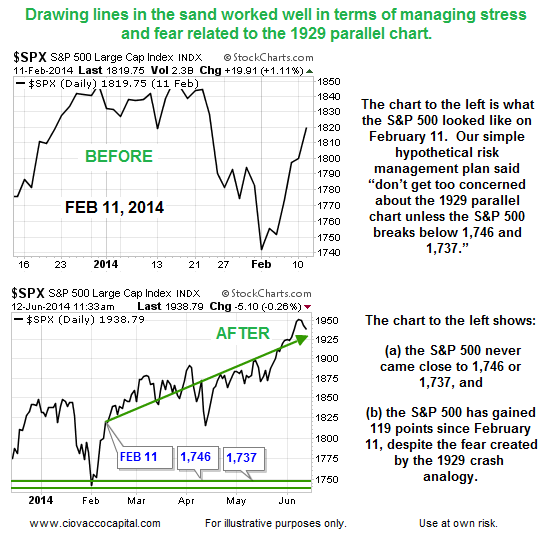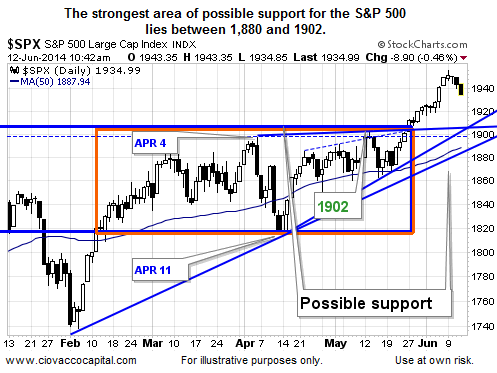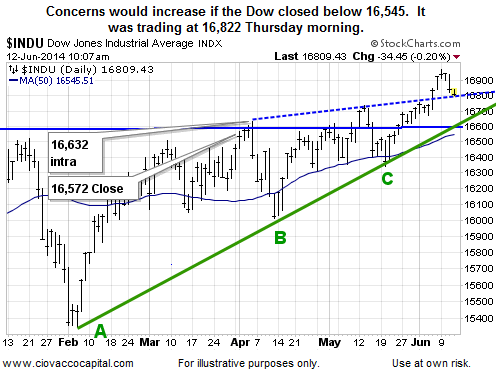If top policy makers and military leaders were caught off guard by the military action in Iraq, as reported by The Wall Street Journal, then we can assume the same can be said for many investors. From Reuters:
The stunning advance of the Islamic State of Iraq and the Levant, which aims to build a Caliphate ruled on medieval Sunni Islamic principles across Syria and Iraq, is the biggest threat to Iraq since U.S. troops withdrew in 2011. Hundreds of thousands of people have fled their homes in fear as the militants seized the main cities of the Tigris valley north of Baghdad in a matter of days. The security forces of Iraq’s autonomous Kurdish north, known as the peshmerga, or those who confront death, took over bases in Kirkuk vacated by the army, a spokesman said. “The whole of Kirkuk has fallen into the hands of peshmerga,” said peshmerga spokesman Jabbar Yawar. “No Iraqi army remains in Kirkuk now.”
Fear Can Be Tamed With Contingency Planning
Events that catch investors by surprise often induce fear and tossing and turning at night. Making investment decisions based primarily on fear is a recipe for stress, frustration, and disappointing performance in the markets. A recent example was the scary 1929 parallel chart that was making the rounds on Wall Street in the first quarter. Rather than liquidating stocks based on the depressing 1929 head-and-shoulders analogy, we penned the following on February 11 as an alternative and more rational approach to portfolio risk management:
If we know the neckline has to break before the 1929 analogy can play out, then we also know as long as the S&P 500 stays above 1,746 and 1,737, then the odds of a 1929-like crash are somewhat limited. Therefore, one way to handle the 1929 scenario in 2014 is to:
- Not lose too much sleep as long as the S&P 500 stays above the neckline (1,746 and 1,737 are good reference points).
- If the neckline is violated, begin to reduce risk in a pre-determined manner using an IF, THEN strategy.
Did The 1929 Plan Help Reduce Stress?
The before and after charts say the simple and hypothetical “don’t lose too much sleep” strategy was useful from a psychological and investment perspective.

Back Of The Napkin Plan For Iraq
Our purpose here is to illustrate the concept of using guideposts to manage stress and portfolio risk. A simple and hypothetical approach to the legitimate concerns being raised about the unrest in Iraq is to use areas of possible support on the S&P 500. For example, we might think along these lines:

- If the S&P 500 stays above 1,902, don’t lose too much sleep over Iraq.
- If the S&P 500 closes below 1,902, consider making adjustments to step three below.
- If the S&P 500 closes below 1,880: (a) cut stock exposure by 10%, and (b) choose the next prudent line in the sand to manage risk using an IF, THEN strategy as outlined on October 18.
People Are Looking For An Excuse To Sell
The negative impact from Iraq was complimented by weak reports on U.S. employment and retail sales. From Bloomberg:
“People are looking for a reason to sell stock right now,” Dan McMahon, director of institutional equity trading at Raymond James and Associates, said in a phone interview. “The economic numbers were a little disappointing. You can’t make new highs everyday.” Investors are watching developments in Iraq, where Islamic militants extended gains after capturing the country’s second-biggest city, while the U.S. weighed an Iraqi request for air support. Oil climbed to an eight-month high on concern the fighting will hurt exports from the second-largest producer in OPEC.”
Investment Implications – Prudent Decision Making
Since the market’s pricing mechanism determines the value of our investments, it is the market’s reaction to Iraq, rather than our personal views or fears, that is most relevant. If the situation in Iraq continues to escalate in a troubling manner for stocks, it is unlikely that the S&P 500 will hold above the 1,902 line in the sand. Conversely, if the S&P 500 remains above 1,902, then logic tells us the market is not overly concerned about the situation in Iraq. The line in the sand gives us a firm guidepost to assist in our decision making process.
We hypothesized Wednesday that it would take a cluster of weak days to cause significant damage to the market’s tolerance for risk. As expected, Wednesday’s session had little impact on the readings of our market model. Since the model serves as our guidepost for decision making, we have made no allocation changes this week. We continue to hold stocks (ARCA:VTI), leading sectors (NYSE:XLK) and Treasuries (ARCA:TLT). If the incoming economic data and unrest in Iraq result in further weakness in equities, we will not hesitate to make the necessary defensive adjustments to our portfolios. For now, we remain in “monitoring the situation” mode. If you prefer to build your IF, THEN plan using the Dow as a guidepost, the chart below may be helpful.
